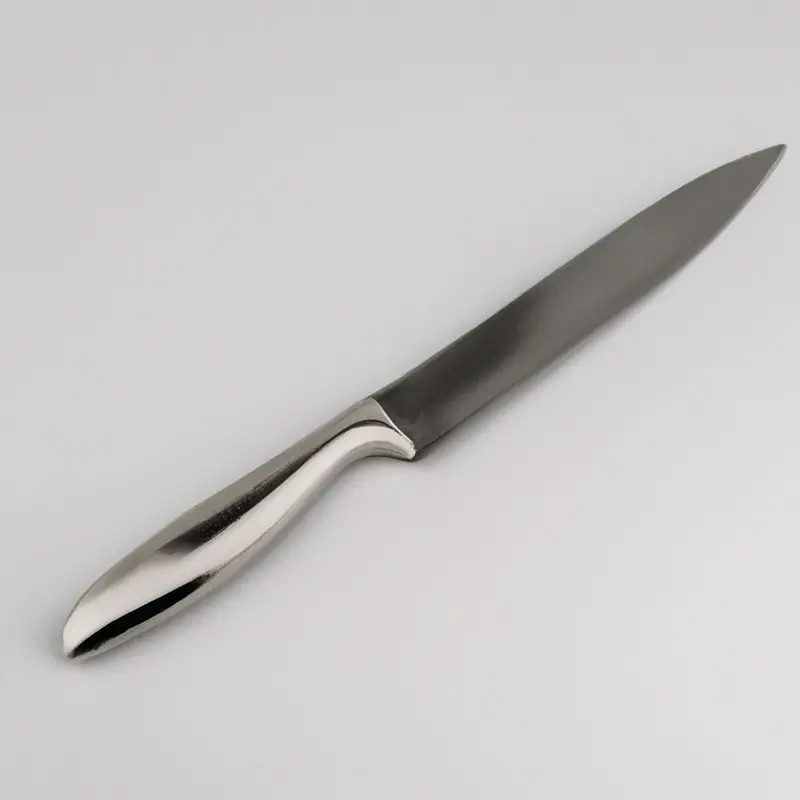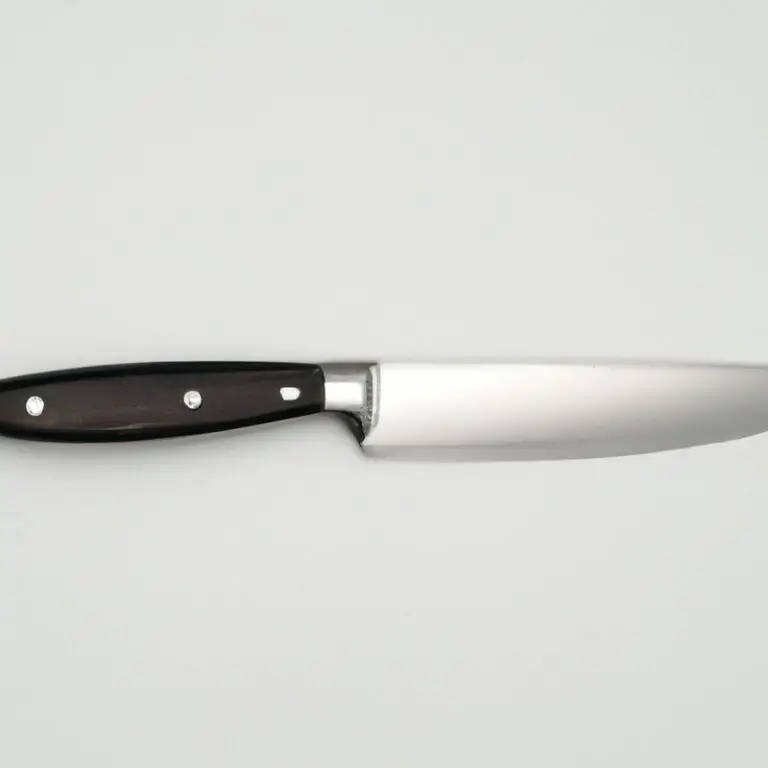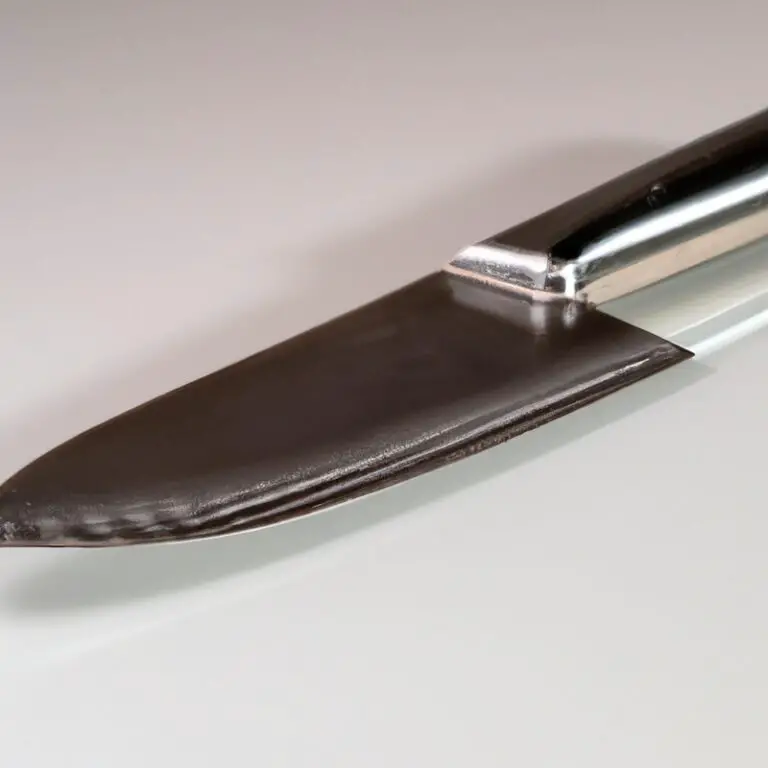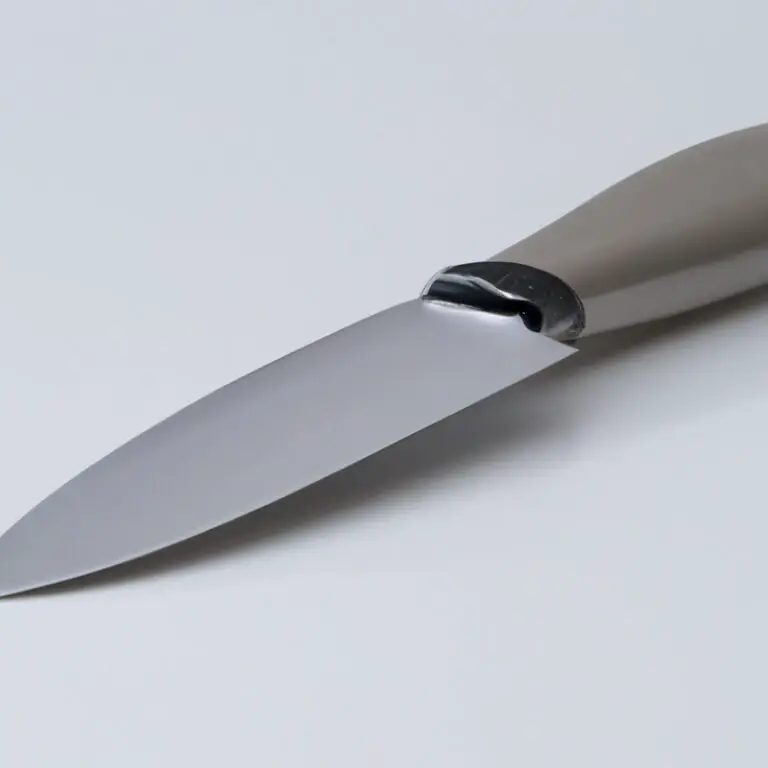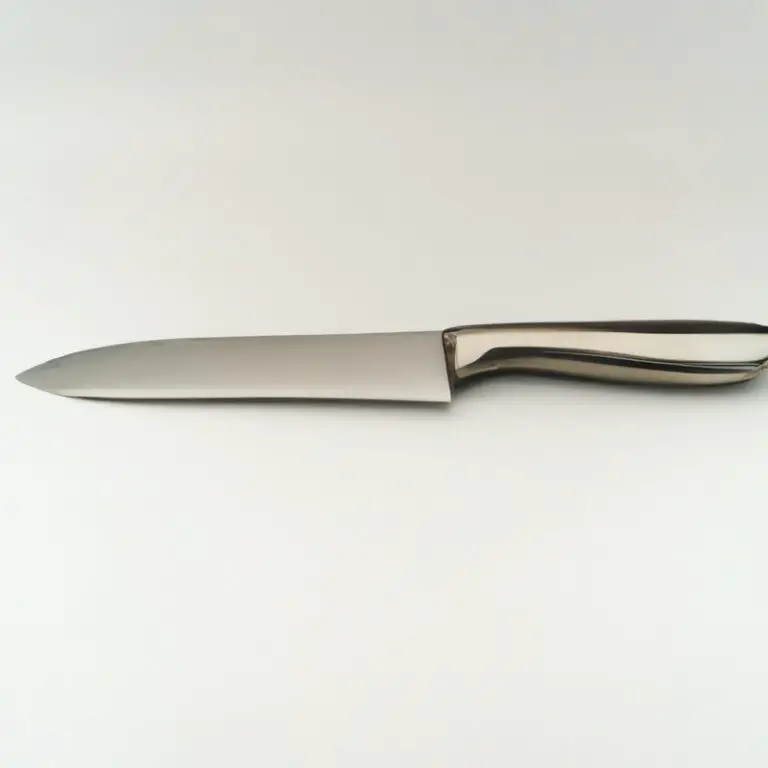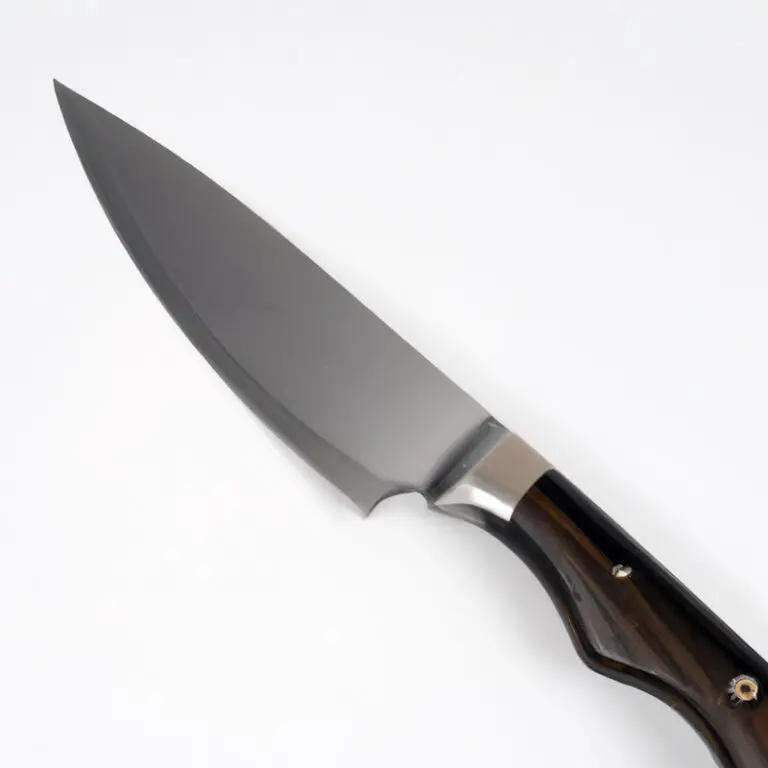Are There Any Specific Paring Knife Techniques For Garnishing? Expert Tips!
Key Takeaways:
- Paring knife techniques are essential for garnishing, adding a touch of elegance and finesse to your dishes.
- Expertly using a paring knife to garnish can elevate even the most basic of dishes, impressing guests and diners alike.
- Practice and precision are key to mastering paring knife techniques for garnishing.
- With the right technique and a sharp paring knife, even beginners can create beautiful garnishes to enhance their culinary creations.
As a chef, one of the most exciting aspects of a dish is its appearance, and garnishing is an essential skill for creating beautiful and impressive plates. A paring knife is an indispensable tool for any garnish enthusiast, but are there any specific techniques to use it?
In this blog post, I will be sharing my expertise on the role of a paring knife in garnishing, selecting the perfect paring knife, basic and advanced techniques, types of garnishes you can create, tips and tricks to perfect your skills, and common mistakes to avoid.
So, let’s get started with expert techniques to enhance your garnishing skills!
Garnishing is an essential skill for chefs and is often used to enhance the presentation of a dish. Paring knives are commonly used in garnishing, but are there any unique techniques that are used? Let’s take a look at the two most common paring knife techniques for garnishing.| Technique | Description |
|---|---|
| Peeling Technique | The peeling technique is achieved by using the curved edge of a paring knife. The technique is best for fruits, vegetables, and herbs, and it is used to peel thin layers off the surface of the garnish. This technique is commonly used to create designs on cucumber, carrots, and limes. |
| Detailing Technique | The detailing technique is used for fine carving and detailed work on garnishes. The technique involves holding the knife with a three-finger grip and using the tip of the blade for precision cuts. This technique is commonly used to create shapes and patterns on small fruits and vegetables such as strawberries, radishes, and cherry tomatoes. |
Understanding the Role of a Paring Knife in Garnishing
Understanding the Role of a Paring Knife in Garnishing: A paring knife is a small, sharp knife that is used for intricate cutting, peeling, and trimming tasks, such as preparing and garnishing fruits and vegetables. It is an essential tool for any chef or home cook who wants to create beautiful and impressive-looking dishes.
The paring knife allows for precision cutting, which is particularly important when it comes to garnishing.
Unlike other knives that are too large or cumbersome for delicate cuts, the paring knife is designed to give chefs the control they need to make intricate designs and fancy shapes for food presentation. It is also useful for removing the skin or rind of produce and for trimming excess fat or unwanted parts.
Understanding the role of a paring knife in garnishing is crucial in achieving the desired result and elevating the appearance of your culinary creations.
Choosing the Right Paring Knife for Garnishing
Choosing the right paring knife for garnishing is crucial to achieving perfect cuts and designs on your ingredients. The ideal paring knife must be sharp, comfortable to hold, and have a blade length of at least 3.5 inches.
An essential factor to consider is the blade’s construction as it determines its durability and sharpness.
For garnishing tasks, a stainless steel blade is recommended over a carbon steel blade because it resists rust and corrosion, maintaining its edge for longer durations. Another important aspect is the handle.
Choose a paring knife with a non-slip, ergonomic handle that provides a secure grip, especially when using it for extended periods.
The handle’s material can be wood, plastic, or rubber, depending on your preference and budget. Moreover, the blade’s shape is equally important in selecting the right paring knife.
A curved blade is best for peeling fruits and vegetables, while a straight blade is ideal for slicing and dicing.
A spear-pointed blade with a sharp tip is great for intricate designs and cuts, while a bird’s beak paring knife is perfect for carving and intricate garnishing tasks. Therefore, before purchasing a paring knife, consider the blade construction, length, handle material, and blade shape to compliment your specific garnishing needs.
Remember that investing in a durable, high-quality paring knife is worth it in the long run as it will last you for years and elevate your garnishing game.
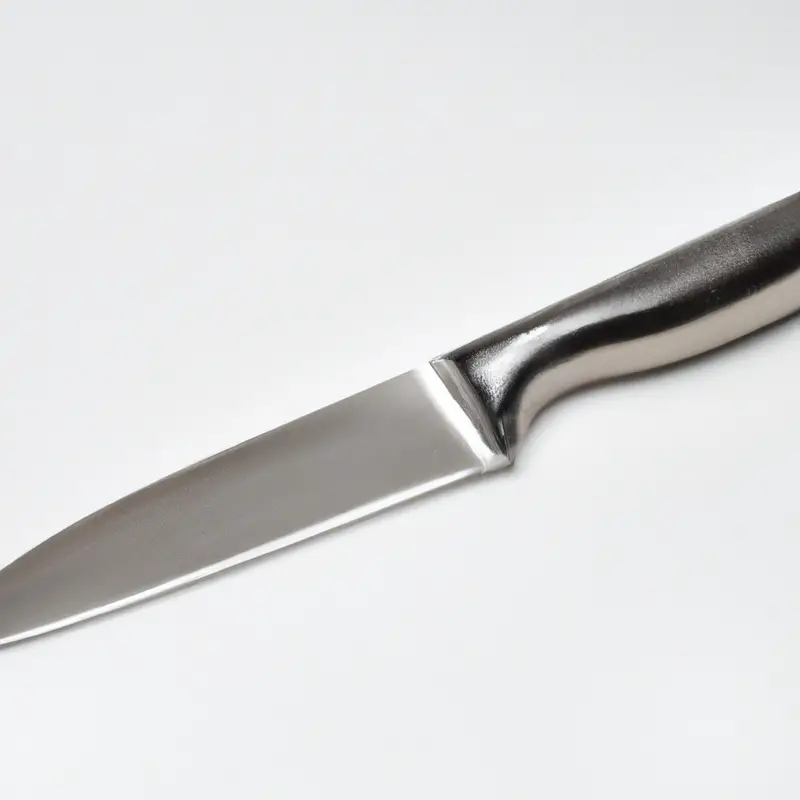
Basic Paring Knife Techniques for Garnishing
Basic Paring Knife Techniques for Garnishing:
- Peeling: The first basic technique is peeling. Holding the fruit or vegetable in one hand and the knife in the other, place the tip of the knife under the skin and use a back and forth motion to remove it. Practice maintaining a steady grip and applying just the right amount of pressure to avoid removing too much of the flesh.
- Chopping: Another basic technique is chopping, which works well for creating small, evenly-sized pieces. Hold the vegetable or fruit with your non-dominant hand and use the paring knife in your dominant hand to make quick, precise cuts. Aim to keep the cuts even in size to create a visually appealing garnish.
- Carving: For more intricate designs, such as creating flowers or animals from fruits and vegetables, carving is a technique that requires more practice and patience. Start by drawing the design on the surface with a marker or pencil, then use the paring knife to carve around the lines. Take care not to apply too much pressure to avoid breaking the garnish.
- Scoring: Scoring is a technique for creating decorative patterns, such as crosshatching or zigzags, on the surface of fruits and vegetables. Use the tip of the paring knife to make shallow cuts on the surface, following the desired pattern.
These basic paring knife techniques for garnishing are essential for creating simple to complex designs that add an extra touch of artistry to any dish.
Advanced Paring Knife Techniques for Garnishing
Advanced Paring Knife Techniques for Garnishing involve mastering a variety of cuts, angles, and motions to create intricate and beautiful garnishes with ease and precision. Some advanced techniques include creating intricate designs, carving out fruit sculptures, and cutting delicate herbs and spices into unique shapes and sizes.
To make these cuts, it’s essential to have a sharp and well-maintained paring knife and to hold it with a firm but gentle grip.
With practice and patience, you can elevate your garnishing skills to a whole new level and impress guests with your beautiful, edible works of art.
Different Types of Garnishes You Can Create with a Paring Knife
Different Types of Garnishes You Can Create with a Paring Knife A paring knife is an excellent tool for creating different types of garnishes. The following are some popular garnishes that you can create using a paring knife:
- Citrus twists – Cut a long, thin strip of citrus peel and twist it around a skewer or your finger. Use it to decorate cocktails or dishes.
- Radish roses – Slicing a radish into thin petals and shaping them into a rose can add a delicate touch to salads and appetizers.
- Melon balls – Use a melon baller or a paring knife to scoop out perfect little balls of melon to add a refreshing touch to fruit salads.
- Carrot flowers – Cut a carrot in a thin strip and roll it up. Press the tip to create a cone shape and prick it with a toothpick to keep the shape.
- Herb sprigs – Tiny sprigs of herbs like mint, rosemary, and thyme can transform a plain dish into an appealing one.
- Fruit butterflies – Slice a thin sliver of a pear or apple. Then, fold the fruit slice in half and make small cuts on the folded edge to create wings. Use the stem as the body and place the butterfly on top of desserts or fruit platters.
- Tomato fans – Slice a tomato about ⅔ of the way through. Use a paring knife to cut small notches above each slice and fan the slices out like an accordion.
These are just a few ideas for garnishes you can create with a paring knife. Get creative and experiment with different fruits, vegetables, and herbs to create unique garnishes that will make your dishes stand out.
Tips and Tricks for Perfecting Your Paring Knife Skills in Garnishing
Here are a few tips and tricks that can help you improve your paring knife skills in garnishing:
- Keep your paring knife sharp: A sharp knife is essential for precision cuts while garnishing. You can sharpen your knife using a honing rod or sharpening stone.
- Use a comfortable grip: Holding the paring knife with a comfortable grip is vital in avoiding accidents while making small, detailed cuts. Grip the handle firmly and your index finger and thumb on the blade end for control.
- Choose the right fruit or vegetable: Choose fresh and firm produce for better cuts and precise shapes. It is also important to choose the right type of produce that can hold its shape.
- Practice different cuts: Experiment with different cuts like peeling, slicing, and dicing to improve your skills. Practice small and slow cuts to understand the texture and hardness of the produce.
- Plan ahead: Before you start cutting your produce, create a mental image of the final outcome. Plan ahead on the fruit or vegetable you want and the cuts you need to make.
- Take your time: Take your time to make precise cuts while minimizing wastage.
- Use a cutting board: Always use a cutting board to avoid cutting your fingers or damaging the surface you are working on.
By following these tips and tricks, you can perfect your paring knife skills and create beautiful garnishes every time.
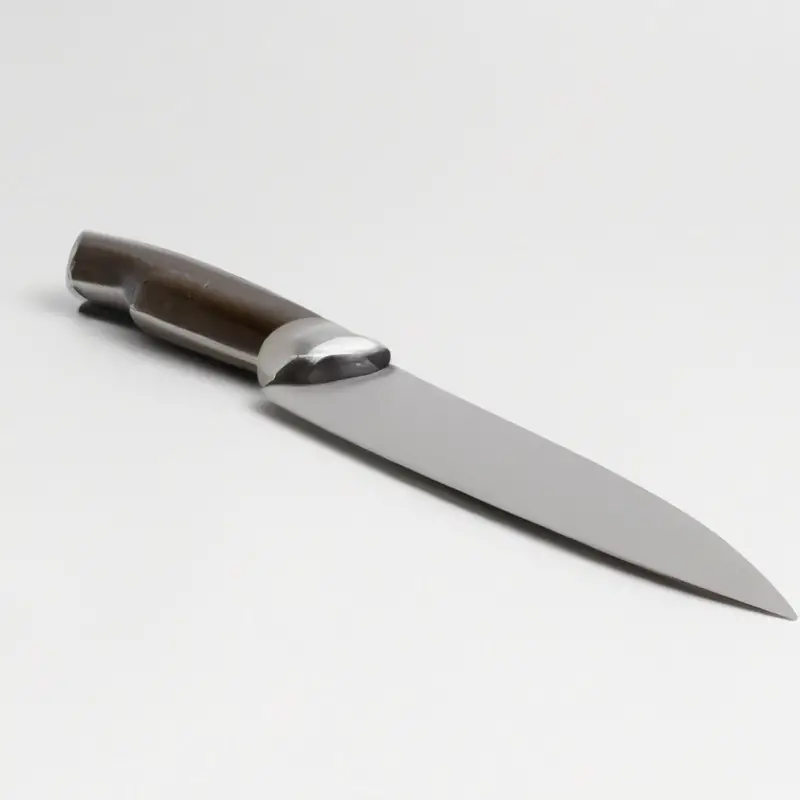
Common Mistakes to Avoid When Using a Paring Knife for Garnishing
When it comes to using a paring knife for garnishing, there are some common mistakes that can be easily avoided to achieve a more professional-looking result. Here are the top mistakes to avoid:
- Using a dull paring knife: A dull knife can damage delicate ingredients and make precise cuts difficult. Sharpen your paring knife before using it for garnishing to ensure clean and effortless cuts.
- Applying too much pressure: Garnishing requires a light touch. Applying too much pressure can crush delicate ingredients and ruin the aesthetic of your dish.
- Cutting towards your hand: Always cut away from your hand to avoid accidents and injuries.
- Holding the knife incorrectly: Hold the paring knife with your index finger on the spine for maximum control and precision.
- Using a regular cutting board: A hard cutting board can damage delicate knife blades. Use a soft cutting board or a kitchen towel instead.
Avoiding these common mistakes can help you achieve beautiful and professional-looking garnishes every time.
How to Care for Your Paring Knife for Long-Lasting Use in Garnishing
To care for your paring knife for long-lasting use in garnishing, follow these tips:
- Hand wash your paring knife with soap and water immediately after use, avoiding the dishwasher.
- Dry the blade and handle thoroughly with a towel before storing to prevent rust and damage.
- Use a honing steel to realign the blade’s edge regularly to ensure it remains sharp.
- Sharpen your paring knife using a whetstone or electric sharpener when it starts to feel dull.
- Store your paring knife in a sheath or knife block to prevent the blade from getting nicked or damaged.
By taking care of your paring knife, you’ll increase its lifespan and maintain its precise cutting ability for beautiful garnishing.
Inspiring Ideas for Beautiful Garnishes Using Paring Knife Techniques
Paring knives are versatile tools in the kitchen when it comes to garnishing. Here are some inspiring ideas for beautiful garnishes using paring knife techniques:
- Flower power: Create edible flowers by slicing thin pieces of fruits or vegetables into petal shapes. Arrange the petals in a circular motion to form a flower and add it to your dish.
- Spiral magic: Use a paring knife to create spiral-cut garnishes from carrots, zucchinis, cucumbers, or radishes. These spirals add texture and aesthetic appeal to salads, appetizers, and entrees.
- Citrus zest: Create zest strips from citrus fruits such as lemons and oranges, and use them to garnish desserts, cocktails, or seafood dishes.
- Creative cuts: Experiment with various cuts such as julienne, brunoise, or batonnet to create geometric shapes or fine pieces of vegetables that add color and dimension to your dishes.
- Herb decor: Use a paring knife to peel herb stems and create intricate designs for use as a garnish on cocktails or dishes.
Remember, the possibilities for garnishes using paring knife techniques are endless. Get creative, experiment with different flavors and textures, and have fun elevating the presentation of your dishes with these simple yet artistic techniques.
Experimenting with Different Flavors, Textures, and Shapes in Garnishing with a Paring Knife
Experimenting with different flavors, textures, and shapes in garnishing is an essential part of making food visually appealing. With a paring knife, you can create a wide variety of garnishes to add new and exciting flavors and textures to your dishes.
To experiment with different flavors, you can use herbs, spices, and fruits as part of your garnish.
For example, cilantro or parsley leaves can add freshness to your plate, while cinnamon or paprika can add warmth and depth to the taste of your dish. To add texture to your garnishes, you can use different cutting techniques with your paring knife.
For example, you can julienne or shred vegetables and fruits to create a crispy texture, or use the knife to carve intricate designs into a vegetable or fruit to add visual interest.
Lastly, experimenting with different shapes can completely change the presentation of your dish. You can use your paring knife to carve vegetables into flower shapes or use it to create geometric patterns on your plate.
Overall, using a paring knife to experiment with different flavors, textures, and shapes can take your dishes to the next level and impress your guests.
Don’t be afraid to get creative and try new things with your paring knife garnishing techniques.
Final Verdict
Mastering the art of garnishing with a paring knife requires practice and patience, but the results are worth the effort. With the proper techniques, you can create stunning and impressive garnishes that will elevate any dish.
From basic cuts to advanced carving, there are countless ways to use a paring knife to create beautiful and unique designs.
By experimenting with different flavors, textures, and shapes, you can take your garnishing skills to the next level and impress your guests with your creations. Remember to choose a high-quality paring knife and keep it well maintained to ensure long-lasting use.
With dedication and perseverance, anyone can become a master of paring knife garnishing.

